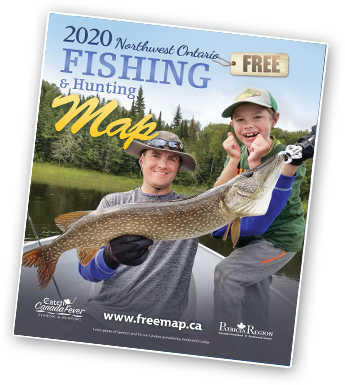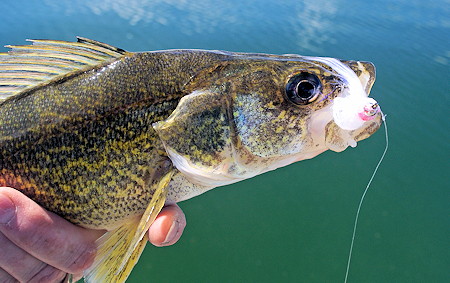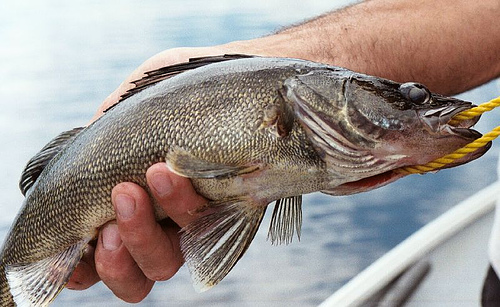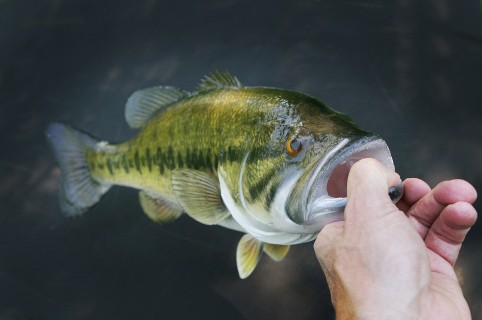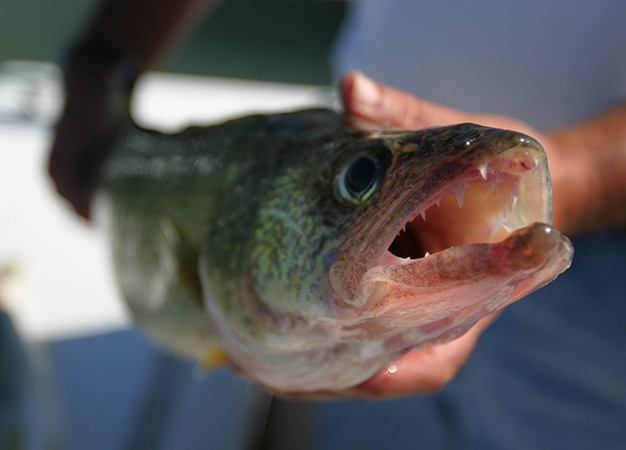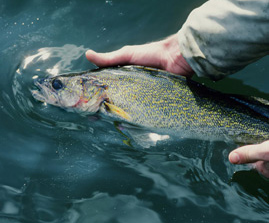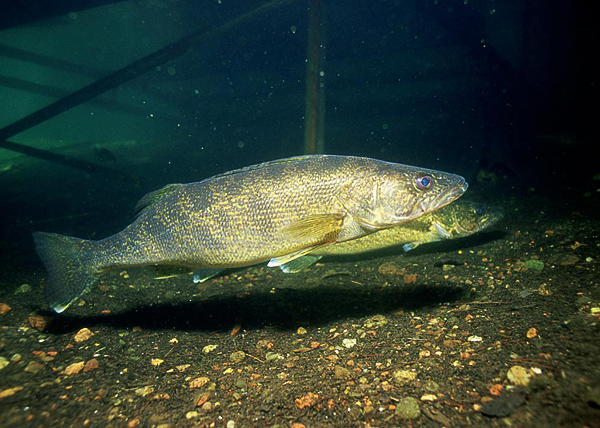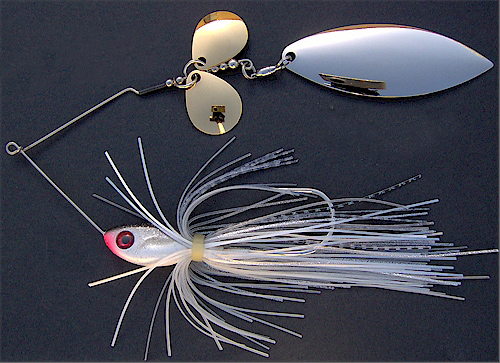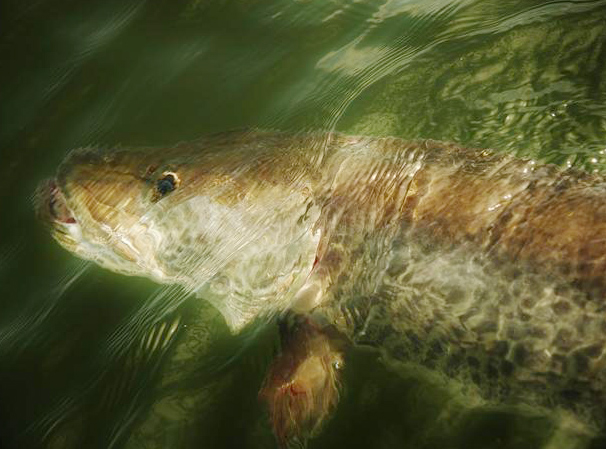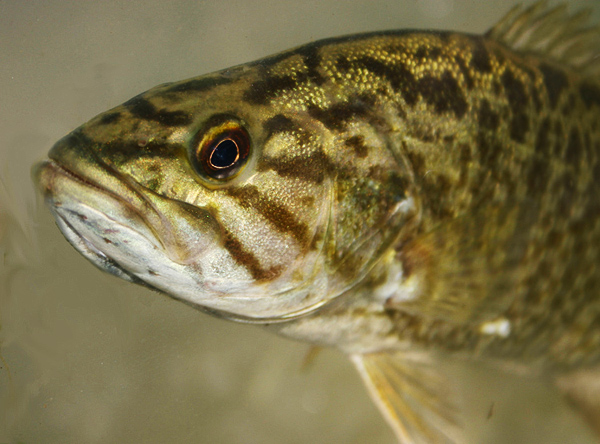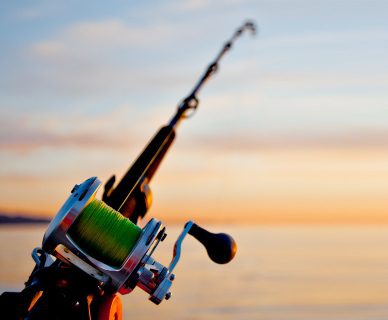Walleye Description
Walleye are freshwater fish found mostly in Canada and some parts of northern states in the USA. They are sometimes referred to as ‘pickerel’. The average walleye is around two pounds, and can weigh up to twenty or more. The fish are greenish in colour with silver on the sides and white undersides. They have two dorsal fins, one that has spines. Walleyes have large mouths with many teeth. Their main markings include a white tip on the bottom of the tail fin and glassy, large eyes. Their eyes help them see in the dimly lit waters and are able to see in the dark. This is how they got the name ‘walleye’. Since walleye’s eyes are so receptive to light, they prefer to stay in darker, muddy water and only venture into the sunlight to spawn. Typically they are most active at night, which is why it’s a good idea to fish in the dark.
Pre-Spawning
Male walleye mature around the age of three or four, while female walleye mature at a much faster rate, usually around one year. Walleyes begin the spawning season by returning to their specific location. These locations are found by instinct in the walleye. Right before spawning, male walleye will form tight groups near dams. The male walleye will wait in this location until the water is the right temperature and the females move in. During this time, walleye fishing is ideal. Once male walleye begin to feel changes in temperature following winter they begin their migration down to the spawning site. They arrive earlier than the female walleye, and may be there for up to a month waiting. The ideal temperature for the female walleye to show up is 7.2 degrees celsius. The water reaches this temperature by heat from the sun. Because of this, different bodies of water may have different spawning times. For example, shallow waters will have a sooner spawning time, while deep, cold waters will have later spawning times.
If the weather takes a change for the worst and experiences a cold snap, the spawning process can be delayed even further. The female walleye hold onto their eggs to wait out the cold. However, if they have to wait too long they will reabsorb their eggs. However, this is not common and normally temperatures reach a good temperature in time for spawning.
Spawning
Once the water reaches a good temperature, the females move to the area that the male walleye are waiting. Spawning typically occurs in relatively shallow water, around one to twenty feet. They spawn in rocky areas, and make use of nearby rock and reefs to leave their eggs in an attempt to offer them protection from predators. Female walleye can lay up to 500,000 eggs. Ideally, the water the eggs are left in will have some waves to keep the water slightly oxygenated and to protect the eggs from dirt and build up. This is why they typically spawn near dams and water channels. The parents do not stay with the eggs or protect the fry. Walleye are not territorial and do not build nests. The incubation period for embryos lasts about from twelve to thirty days, although the time varies depending on the temperature. Once the eggs hatch, the embryos swim around for about a week and absorb the yolk. After this, they begin to eat plankton, larvae, and other small water invertebrates.After about two months, the baby walleye will begin to feed exclusively on other fish, such as perch. They also will eat leeches, minnows and crayfish.
Walleye groups spawn in different locations based off of instinct and strategy. By varying their spawning areas they protect themselves from having entire schools being wiped out by natural disasters. Walleye that spawn in a stream rather than a lake typically spawn much sooner. Stream spawning walleye typically gather near a dam or some type of blockage in the stream. On the other hand, walleye that spawn in the lake gather in a deeper part and then meet the females in more shallow water. Female walleye usually stick to deeper water where there is more food and cover during the daytime. Then, at night when they are ready to spawn they head to the meeting spot. Female walleye typically spawn for about four hours. The ideal time to catch large walleye during spawning is right after it gets dark to midnight. When walleye are finished spawning, they will go rest in deeper waters. Walleye that spawn in rivers and streams will return to larger bodies of water such as lakes after their spawning period. Female walleye typically leave before the males, as they the males typically linger in the spawning area until the females have left.
While fishing during the spawning season can be fun and eventful, fisherman need to be sure that they don’t over fish the spawning walleye females in order to maintain a healthy population. Since walleye return to the same spot annually, once you find them you can return to this spot year after year. Once you find the walleye spawning area, look nearby for a flat bottom area, which will likely be the walleye’s staging area.Remember, walleye spawning activity depends on the water temperature. Monitor the temperature daily and you will likely be able to predict the day they will spawn. Also, as previously mentioned, the walleye are more active from dawn till around midnight. Another added benefit which may assist you when walleye fishing is quality fishing equipment. A rod that is higher in quality will help you feel lighter bites better than a low quality rod. When fishing along the shore, it is a good idea to use a shallow diving crank bait.
Post-Spawn
Fishing after the walleye spawn can be very successful. The fish are hungry from going without food during spawning. Baitfish, which is the main component of a walleye’s diet, is low in supply during this time. Walleye have an appetite and are much more likely to take bait. The key to taking advantage of this boom in fish appetite is mastering the timing. Walleye will be very active prior to spawning, and then very inactive during the actual spawning. Once the spawn is over, they take a couple of weeks to become more active again. If you decide to fish within a couple of weeks after spawning, you may leave rather empty handed. However, once this time has passed, you will be reeling in fish after fish.
Another tip for fishing during the spawning season is to fish deep when you aren’t having success in shallow water. The water in lakes goes through a turnover in spring similar to fall. This means that the water is an even temperature on the bottom and top of the lake. Big fish can be caught post-spawn in deeper waters because of this. Later in the season when the lake’s temperatures are uneven again, you will likely have more luck fishing shallow in warmer waters.
Fishing near open shores that are windy will produce better results than fishing in calm areas of water. These waves that are created by the wind are sometimes referred to as the ‘walleye chop’. Minnows and baitfish are more likely to be in windy water due to plankton blowing in, which in turn draws in walleye. The wind chops the water and reduces that amount of light underwater, which walleye prefer. If it’s a hot, sunny day then the warm water will be pushed into these windy areas by the waves. Water is typically warmer in bays, as the shoreline breaks it apart from the rest of the water. If fish don’t seem to be biting in the basin you’re in post-spawn, try moving to a different basin, preferably a shallow one. Basins are treated as separate lakes by walleye and may have different spawning times.
Now that you know more about the walleye spawning cycle you will hopefully have better luck planning your fishing trips! Happy fishing……


